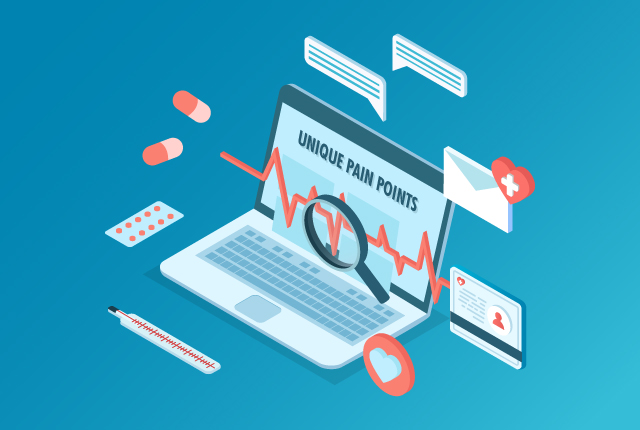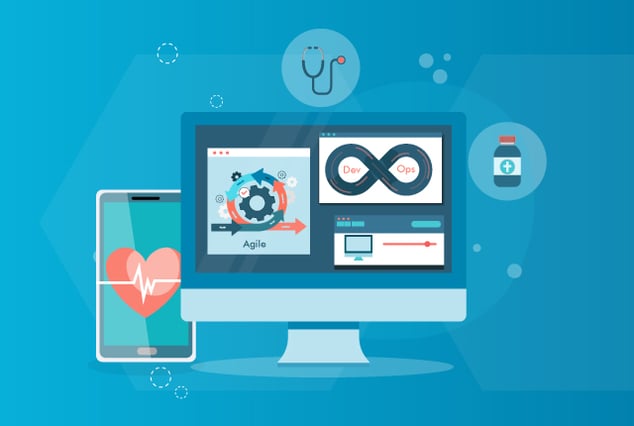
Healthcare is one of the most rigorous and unique areas when building and testing software products. Product companies in this space are helping doctors, patients, and other medical professionals reimagine what’s possible with wearable technology, hospital indexing systems, and countless other innovations.
The complexity of these new products demands thorough and stringent testing, as the quality can directly impact a patient’s life. Other high-stakes factors to consider are the cost and worth of the product to the customer, the protection of private and confidential patient data, and the safety of all patients or caregivers who interact with the product.
This three-part blog series will explore the unique pain points of healthcare software testing and its solutions.
Accuracy and reliability of medical tests are critical and foremost important factors in the healthcare stack. False positives or negatives can lead to incorrect diagnoses or inappropriate treatments, which can have severe consequences for the patient, i.e., a risk to life.
Lack of Domain Expertise
Healthcare projects have a complex architecture, multiple workflows, and large volumes of data. Testers must have the proper training and required compliance certifications to clearly understand the business workflows and fundamental insights into medical terminologies, make informed decisions, and find the root cause of an issue.
Pain Points/Examples:
-
If the subject matter experts lack the qualifications, they will waste time trying to understand how the system works instead of discussing the substance of clinical content.
-
Poor training can also prevent teams from missing defined timelines, indirectly affecting business flow, patient report generation, and medical reimbursements.
-
Reporting incorrect results or failing to test critical algorithms during testing for diagnoses, medication, processes, or application modules can lead to trust erosion. This may further lead to financial loss and damage to the service provider's reputation.
Solutions:
-
Identify the gaps/areas within the healthcare domain where expertise is lacking, understand the aspects, and get trained. SMEs might need more information about the terminologies, regulatory requirements, and data security.
-
Comprehensive documentation should be maintained to ensure and help the testing team to be clear and aware of the intricacies of the domain.
-
At the learning stage, instead of raising direct defects, logical questions can be put forward to confirm understanding from the business analyst or product owner. So, an iterative testing process and feedback format should be followed.
Healthcare Standards and Compliances
Healthcare space is heavily monitored and standardized - for good reason. HIPAA, the FDA, and other governing bodies ensure that standards preserving the quality of care and the security of patient data are upheld. Because of the strictness of healthcare software testing, some pain points can emerge.
Pain Points/Examples:
-
Interoperability of electronic health information and inadequacy in testing as issues like inaccurate or inappropriate transmission of data in messages or inaccurate data processing may occur.
-
Data breaches and compromised security will lead to privacy concerns as important/crucial patient information can be disclosed to unauthorized persons.
Example: Personal information/sensitive data that is not encrypted is leaked to a network/application providing unauthorized access, which can cause personal damage or theft.
Solutions:
-
A robust compliance-focused approach must be followed from the initial stage of the testing process. Hence, comprehensive testing must be applied, Where Testers have information on various standards and compliances like HIPAA, DICOM, FDA, ISO, HL7, CMMI, etc, to ensure that applications adhere to proper standards including:
- Conformance Standards (data standardization)
- Transport Standards (address the format of the message exchanged)
- Terminologies Standards (effective communication)
- Security Standards (administrative, physical, and technical actions to protect the confidentiality, availability, and integrity of health information)
-
Thorough functional testing using superlative sender and receiver tools will help verify correct information is being transmitted and ensure the terminologies and lab codes used are per the healthcare standards.
-
Ensuring sensitive information being shared via healthcare applications like billing records and medical records is secure by performing end-to-end testing.
-
There must be a process in place for monitoring compliance and investigating any potential violations.
Data Migration
New technologies emerge every day. As a result, healthcare companies migrate to improved platforms for new features, better functionality, delightful user experience, and increased security and reliability. The benefit is there, but it comes with a risk—how to transfer the data?
Moving massive amounts of data is a challenge for any enterprise environment since interruptions or issues with data storage compatibility can expose sensitive healthcare data, cause patient data loss, and hinder privacy. Below are some challenges of migrating healthcare data from the legacy platform to the new one.
Pain Points/Examples:
-
Migration tasks affect QA teams since they must work closely on resource planning. This may include hiring new resources with the required skill set for migration, retaining the existing members for testing legacy applications, and creating new application workflows based on current business logic.
-
Another critical factor is testing data profiling and governance of migrated data, as failure may lead to data leakage.
-
There is a high risk of significant data loss for data kept in transitional states, so precise transitional testing is needed.
-
Maintaining automation suites of legacy applications is yet another additional effort.
-
Downtime and disruption of applications due to their unavailability can be another pain that can be caused during the data migration process.
Solutions:
-
During data migration, efficiently recruiting, managing, retaining, and re-deploying talent to ensure team effectiveness according to current and future business priorities is necessary.
-
Close analysis of all the QA process tools used with the new platform.
-
Accurate effort analysis and timely communication of risks or delays to the customer are significant.
-
A successful migration is impossible unless everyone knows what’s happening. So, open communication and transparency between all teams is recommended.
-
Minimizing downtime while ensuring a smooth transition, as it can impact patient care and business operations.
Conclusion
Ensuring the solution of the above parameters and providing thorough testing, considering all the pains mentioned above, not only mitigate potential adverse outcomes but also contribute to a safe, reliable, and effective healthcare application that benefits patients and healthcare providers.
Need to start testing a healthcare product?
Download your free healthcare software testing checklist now!


